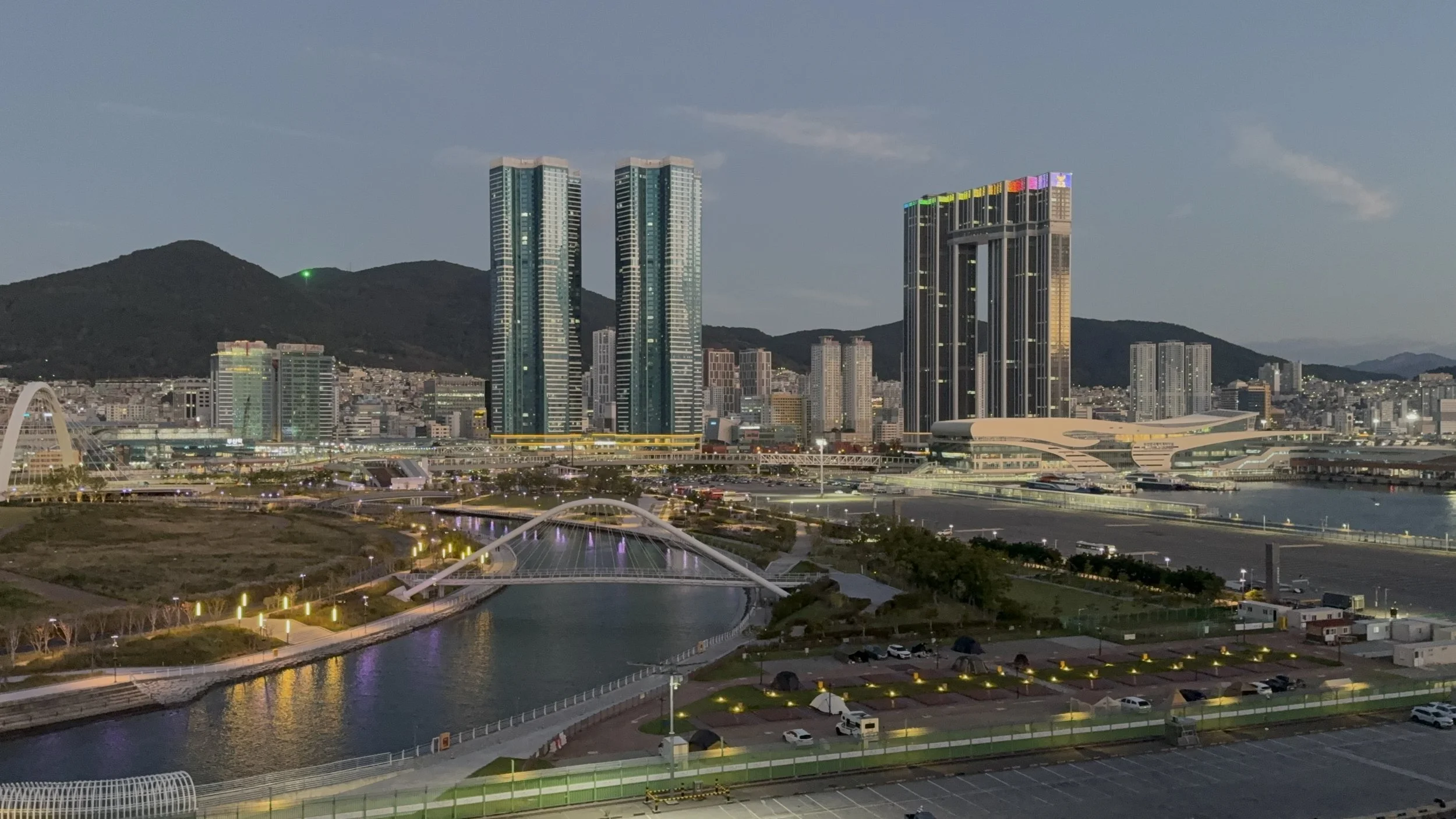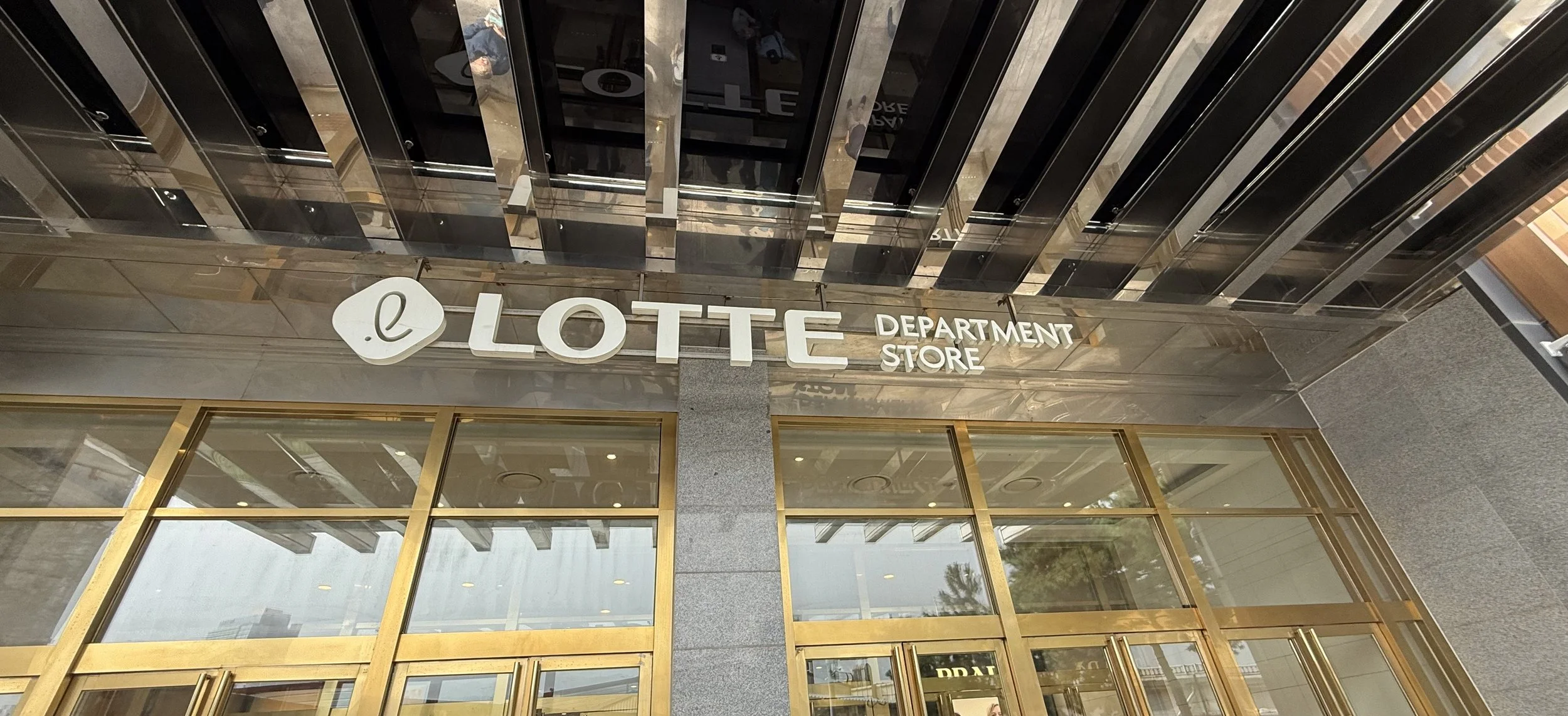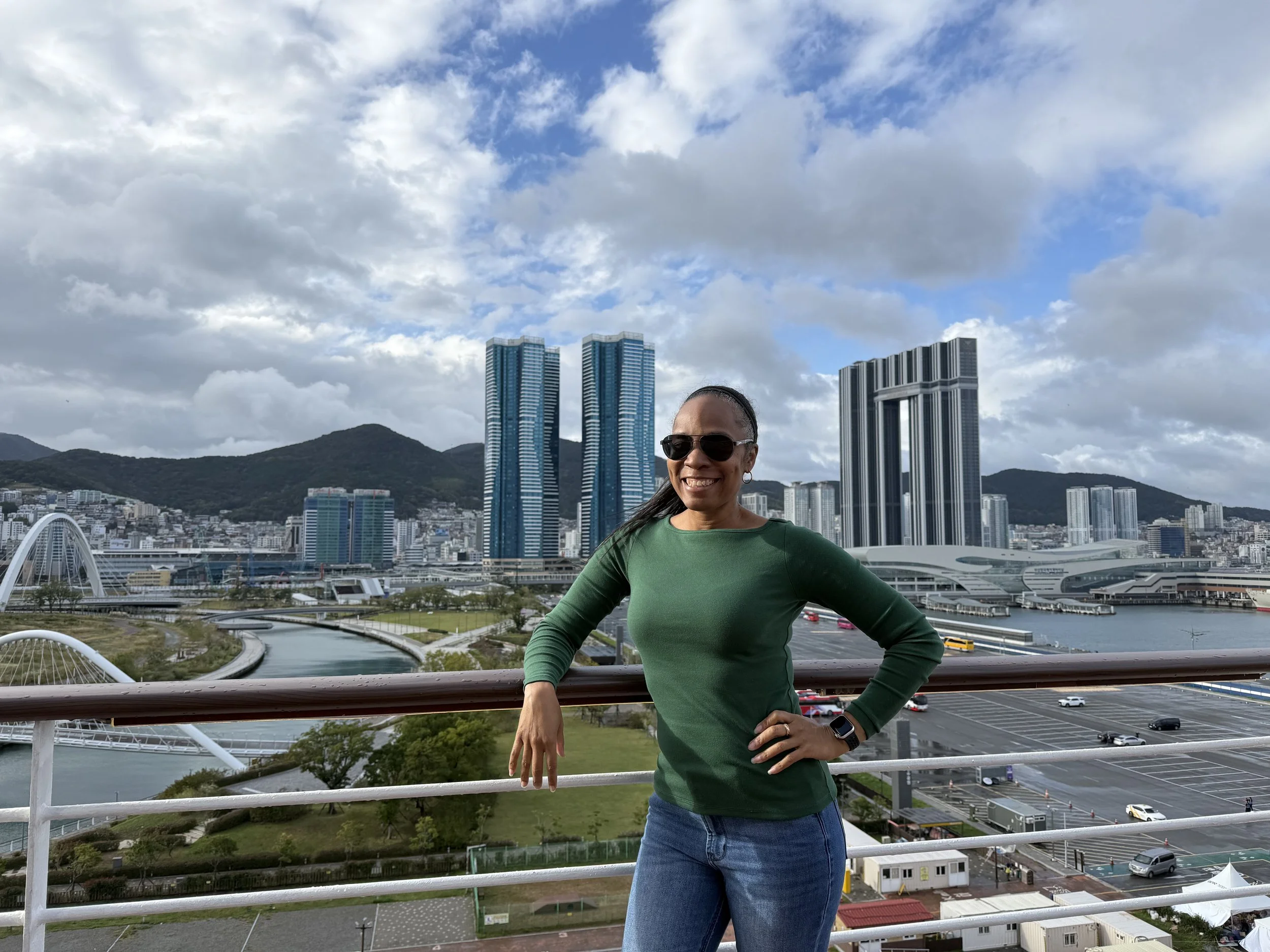A Day in Busan, South Korea
View of Busan from the harbor
We arrived in Busan on a clear Friday morning. The dawn light cast a warm reflection on the city’s skyline, with cargo cranes stretching above the port and ferries and fishing boats drifting along the water. From the deck, the city unfolded in layers. The twin skyscrapers of Haeundae rose like glass pillars against the dark hills, and the lights along the waterfront shimmered across the harbor. It was a striking welcome, the kind that makes you pause for a moment just to take it all in.
It was my first time in Korea, and the day felt full of promise. I’d booked a guided tour, ready to make the most of my short stop in the country.
Busan is South Korea’s second largest city, home to more than 3.5 million people, and its port is the sixth busiest in the world, a major hub for trade and travel across Asia. Located on the country’s southeastern coast, Busan sits about 200 miles from Seoul, the capital and largest city, which lies in the northwest near the border with North Korea. Busan’s neighborhoods climb up steep hills in waves of color. The pastel painted homes of Gamcheon Culture Village spill down the slopes like an artist’s palette, while modern glass towers gleam along Haeundae Beach. The city blends fishing heritage with sleek development, with markets heavy with the scent of the sea sitting just blocks from boutique malls and high speed trains. Its mix of mountain, harbor, and beach makes it one of South Korea’s most visually striking cities.
After collecting my tour sticker, I stepped off the ship and joined the group. The morning air was cool as we boarded the bus. It was bright pink, inside and out, with “Happy Traveler” stitched across the seats in rainbow thread.
As we left the port, the number of high rise apartment buildings was striking. Our guide explained that about 60 percent of Busan’s residents live in condominiums like these, rising in clusters across the city’s hillsides. From the window, there seemed to be no end to them, row upon row of tall buildings broken only by the occasional park or highway. We crossed a series of sweeping bridges that curved over the water, offering quick glimpses of the port and the ships below before disappearing back into the maze of city streets. Our driver handled it all with calm precision, steering the massive vehicle through narrow roads and backing into impossibly tight parking spots.
Stop 1: Bokcheon Museum and Burial Mounds
Our first stop was Bokcheon Museum, home to ancient burial mounds dating back to the 3rd and 6th centuries. The museum does an excellent job explaining the early kingdoms that shaped Busan’s past. We spent about an hour exploring its three floors of artifacts, maps, and recreated tombs.
Stop 2: Busan Tower
Next was Busan Tower, one of the city’s most recognizable landmarks in Yongdusan Park. Clouds had started to roll in as the bus climbed the hill, and our driver skillfully maneuvered the narrow road before parking in a space that seemed barely wide enough for us.
The tower stands 120 meters tall and was built in 1973 as a symbol of the city’s maritime strength. Unlike other towers, it’s not used for broadcasting but purely for sightseeing, which gives it a relaxed, open feel. Visitors take an elevator to the top, where the 360 degree view stretches across the city to the harbor and surrounding hills. Inside, a small café and souvenir shop share the space with interactive digital maps that highlight Busan’s districts and landmarks. A narrow stairway connects the first and second viewing levels, so only a few people can pass through at a time, which makes it feel a bit cramped when busy. On clear days, you can see as far as the port and the bridges you crossed coming in. Just as we descended, the first drops of rain began to fall.
Stop 3: Lotte Department Store
Next, we stopped at Lotte Department Store Gwangbok Branch, one of Busan’s premier shopping destinations. By the time we arrived, the light drizzle had turned into a steady rain. We were given an hour to eat and shop.
The department store is more than a mall, it’s an attraction in itself. Inside are luxury brands, Korean skincare counters, and an enormous food hall filled with stalls selling everything from kimchi pancakes to bubble tea. The real gem is the rooftop Sky Park, which offers sweeping views of Busan Harbor and the city’s skyline. I didn’t make it up there because of the rain, but on a clear day, it’s one of the best spots to see the city from above.
I stopped at a bakery inside and bought a bun, then went to a place called Downtowener and ate chicken cheese fries. The food court area had several stalls offering treats that ranged from the savory to the whimsical. I saw Harry Potter themed donuts and overstuffed macarons decorated with hearts and eyes. The hour passed quickly, tucked away from the rain and surrounded by the bustle of shoppers and the scent of baked goods drifting through the air.
When it came time to head back, the rain hadn’t let up. I’d planned to walk around the city, but Busan would have to wait for a sunnier day. I returned to the ship, damp but satisfied with my glimpse of South Korea’s dynamic port city. One day in Korea was definitely not enough. I’ll be back to do a deeper dive into the country, eventually.
Getting Around Busan
Cruise ships dock at Busan Port International Passenger Terminal, about 15 minutes by taxi from Busan Station. The city’s metro is clean, efficient, and well signed in English. For independent travelers, a T money card works on both the subway and buses across Korea. Major sights like Busan Tower, Jagalchi Market, and Nampo dong are all connected by Metro Line 1, while Line 2 runs out to the beach districts of Haeundae and Gwangalli.
If you’re visiting on a short cruise stop, guided tours or hop on hop off buses are the easiest way to cover ground quickly. Otherwise, spend at least two days here. The mix of ocean views, mountains, and urban energy deserves more than a few passing hours.
Other Things to Do in Busan
If you have more time in Busan or want to plan a return trip, here are some great ways to spend a day or two exploring the city:
• Gamcheon Culture Village – A colorful hillside neighborhood filled with murals, art shops, and cafés.
• Haeundae Beach – The most famous beach in Busan, great for swimming and people watching in summer.
• Haedong Yonggungsa Temple – A seaside Buddhist temple perched dramatically above the ocean.
• Jagalchi Fish Market – Korea’s largest seafood market, where you can try freshly caught fish and shellfish.
• Gwangalli Beach – Known for its bridge views and lively nightlife.
• Beomeosa Temple – A historic temple nestled in the foothills of Geumjeongsan Mountain.
• Busan Citizens Park – A peaceful green space in the heart of the city, ideal for a quiet walk or picnic.
• Shinsegae Centum City – Recognized as the world’s largest department store, filled with restaurants, shops, and a spa.
• Taejongdae Resort Park – A scenic park with cliffs, walking trails, and coastal views.
• Oryukdo Skywalk – A glass platform built over the sea, offering sweeping views of the ocean below.
General Info
• Currency: South Korea uses the Korean won (₩). Credit cards are widely accepted, but it’s useful to keep small bills for local buses, markets, and small eateries.
• Language: The official language is Korean. English is common on public transport and at major attractions, though learning a few simple phrases in Korean is appreciated.
• Time Zone: Korea Standard Time (UTC +9).
• Weather: Busan’s coastal climate is mild year-round. Spring and fall are ideal for sightseeing, while summers are hot and humid.
• Transportation: The T-money card can be used on buses, subways, and some taxis throughout Korea. It can be recharged at convenience stores and subway stations.
• Safety: Busan is very safe for travelers. Crime is rare, and public areas are clean, well lit, and easy to navigate.
• Etiquette: A small bow or nod is a polite greeting. Remove your shoes when entering homes and certain restaurants.
• Connectivity: Free Wi-Fi is widely available. For longer stays, portable Wi-Fi routers or local SIM cards offer stronger connections.








